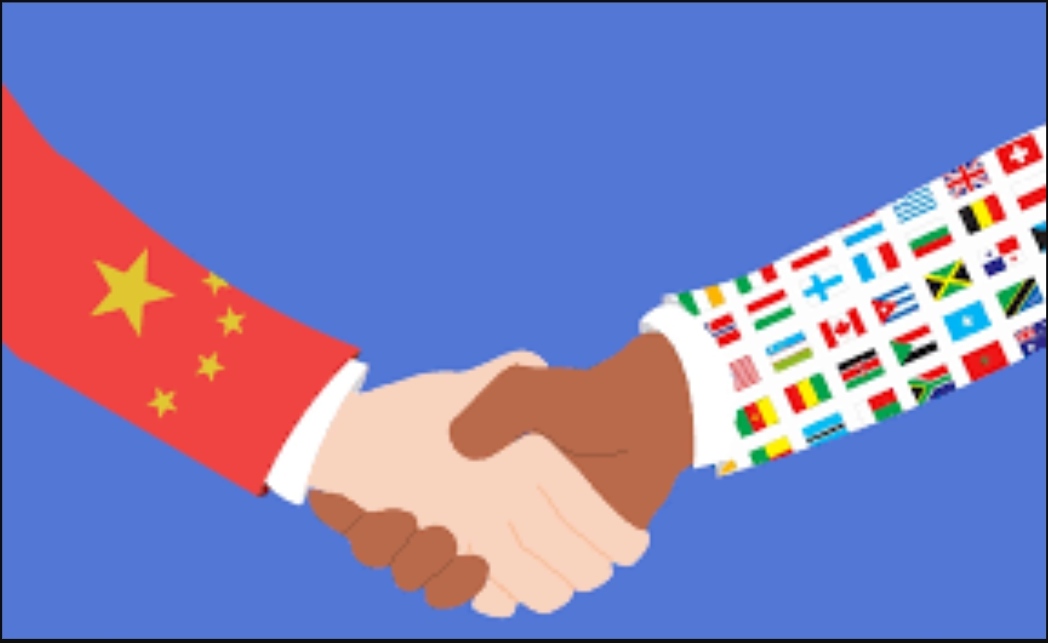India’s crucible test in foreign relations

By
Col Satish Singh Lalotra
‘Opportunities multiply as they are seized’—- ‘SUN TZU’
The daring day light attack on 20th April 2023 at Bhatta Durain of Poonch followed after few days by the mayhem unleashed near Kandi forest area of Rajauri sector on 05th May on a team of 49 RR and 9 Para SF respectively by a joint team of Jaish -e Mohammed and Lashkar – e Toiba has once again stirred the placid waters of peace of the sub-continent .
These terrorists are reportedly part of the Kotli based Sajjid Butt also known as the Habibullah Malik module operating out of Pakistan. The two events coming as it is in the wake of the ongoing high profile visits of G20 countries across the length and breadth of India shows how tenuous the relations have been of India with its neighbours despite 75 years of independence who want to upset the apple cart of India’s meteoric rise in all spheres of development.
Once flying high the standards of ‘Non-aligned movement’ in the world under our first PM in cohort with a Nasser, Tito and Sukarno in the 1950s and 60s; it seems now to even a green horn that India has not been able to shake off its past tag of neutrality and come on top of things as they present themselves with their ugly regularity despite the geographical enormity at its command.
Have we been able to hedge Pakistan’s state policies and its intransigence towards us since independence in all its sincerity? If not, then where have we fallen short? What is the way forward for us?
The end of cold war hitherto tacitly justified the neutrality of most nations on the global stage in the period that followed. Any stark contrarian positions easily reminded nations of the hostile binaries of the cold war – the USA and Soviet Union, capitalism and communism, NATO and the
Warsaw pact etc.
In international relations there are no permanent friends or permanent enemies, only permanent interests. It was precisely not to get sucked into the whirlpool of either of the power blocs in the 50s and 60s that the so called NAM came into existence.
A means to avoid taking definite positions inorder to maintain course as dictated by nationalistic aspirations also loosely called as ‘Hedging’ is what I am going to discuss over here in this write up of mine.
AWhat exactly do we mean by hedging in the strategic realm? ‘Strategic hedging’ means a nation state spreads its risks by pursuing two opposite policies towards another state I.e balancing and engagement. Astate
prepares for the worst by balancing: maintaining a strong military, building and strengthening
alliances. Not only that the state prepares for the best through engagement: building networks, increasing diplomatic links and creating binding multilateral frameworks. In short ‘Strategic hedging’ would mean a calculated combination of soft and hard power.
The binaries which I mentioned earlier created power concentrations into opposed blocs, strengthened respective negotiating positions in the blocs, and in turn created an unbridgeable distance between two sets of nations.
To take a few examples of strategic hedging in international relations; in case of Indo-French ties India and France had in the recent past launched a multitude of options like international solar alliance as also jointly laid a road map for cyber security , digital technology, quantum computing and artificial intelligence.
Indian Ocean has been the arena of joint Indo-French strategic vision too with India choosing it’s age old French defence partner Dassault Aviation to contract top of the class Rafale fighters.
The ultimate test on the anvil of which both countries have stood firm is the rock solid stance taken by France in its unqualified support for India in its revoking of article 370 in the erstwhile state of Jammu and Kashmir.
As if this nudge to Pakistan was not enough by France, the latest visit of French ambassador H.EMr Emmanuel Lenain in April this year to Arunachal Pradesh was a direct challenge to the China’s hegemony who has been claiming this part of India as southern Tibet. These actions by France have been buffeting us from any head winds from two of our adversaries in the immediate neighbourhood.
In the realm of Indo-US ties our foreign policy has met some of the most stringent tests set for its foreign policy mandarins to pass muster while maintaining strong relations with both china and Russia with Ukraine war looming in the background.
Indo-US ties though having cozied up in the last few years with changed geo-strategic compulsions is fraught with American fetish to pander to Pakistan’s unrealistic and grandiose plans to contain India in its track to glory and prosperity. India has been lately worried about US-Pakistan rapprochement, given the hasty withdrawal from Afghanistan in August 2021 thus creating a big vacuum in one of the most volatile areas of the world.
In fact Pakistan tried to leverage this by engaging the US against India’s action of revocation of article 370. US on the other hand had given its assent obliquely to the revocation by its repeated stance that both the neighbours ought to sort out their matters bilaterally.
In a move that portends well for both the democracies is the fact that India has become a member of the ‘QUAD’ in order to balance out china in the south china sea which is advancing its cause through the infamous ‘Nine/eleven dash line’. Trade is the biggest irritant between the two countries which needs to besorted out as soon as possible.
The single most foreign policy initiative under the present dispensation which needs tweaking to send a strong riposte to the frequent spats of brinkmanship with India is with regard to China and Pakistan. Issues like China’s axis with Pakistan aimed at India by adoption of its various tactics like salami slicing, constant push west wards of its disputed boundary, snooping around the IOR (Indian ocean region), Pakistan’s providing a foothold at Gawadarport , all pose a threat to India’s interests.
To counter these Chinese evil machinations India ought to shun its ‘Top -down ‘approach in regional politics which has failed miserably driving smaller nations like Nepal, Sri Lanka, Maldives, etc into china’s fold. The recent threat of Nepal by refusing India to let its Gurkha youth recruit in the Indian army , annulment of 1950 treaty of peace and friendship between the two Hindu dominated countries, refusal to let India build a Buddhist college at Mustang ,the Kalapni – Lipulekh imbroglio an area that hugs the TAR (Tibetan autonomous region) has left India where stark choices would be extremely difficult to make but seem desperately needed to contain China with smaller countries on its periphery doing our bidding.
As for containment of Pakistan’s intransigence, has India been able to hedge its favourable position which it finds itself in restive Baluchistan or for that matter with a friendly Iran? What is stopping India to make Baluchistan into a full-fledged case of liberation as was done during the 1971 war? Geographically Baluchistan being more compact and within easy turnaround time for our agencies to cast their effect, it would sound a double whammy for both China and Pakistan where billions of Pakistani rupees and Chinese Yuan have been invested to make the BRI (Belt road imitative) a success.
With an occasional Iran too breathing down the neck of Pakistan, has India ever tried its hedging hand in cohort with Iran to unsettle things in the southernmost part of Pakistan as a countervailing force to what Pakistan has been doing in Jammu and Kashmir for the last three decades plus?
Was it the case of national leadership firmly in the hands of iron lady ‘Indira Gandhi’ in 1971 that made us hedge our advantages to its fullest with regard to our western adversary or is it something else that is preventing us from punching proportionate to our being a heavy weight as an economic power or a technical giant in IT with 4th largest army under our command?
Without substantial symmetry between capabilities and power on one side and political will, strategy and implementation on the other, it leaves very limited scope for incorporating hedging as a necessary component in its foreign policy. India’s ‘strategic autonomy’ has hitherto prevented it from being too outgoing or evincing a necessary bias in its foreign policy outlook.
Under current circumstances, when most of the other countries are hedging against India by qualifying their expectations with conditions and objections there is both a time and a need for India to adopt similar countermeasures.
As such if India were to indeed create adequate leverages with countries to begin the process of hedging, it would have to start with an unapologetic political will to absorb the hedging from lower tier countries as mentioned above and employ to those above.
It is quite strange and baffles me to no end that with the countries of the size of China and US we have been quite upfront and dug in our heels when it came to protect our national interests be it at Doklam or even at Galwan or the indirect threat of US for our acquisition of S-400 air defence system from Russia. But lacked the same gusto in dealing with relatively lesser countries.
To ring fence ourselves with relatively smaller countries and making them fall in line to our strategic thinking may be the ultimate panacea we are looking for to engage bigger countries, since in international relations it is not the size which matters but the number that back us up.
How can India forget that despite being the ring leader of NAM countries, when it came to take on China for its 1962 misadventure in the UN it didn’t find manybackers? Naturally we had lost the power of hedging when it was required most.
Furthermore strategic hedging dilutes binaries in foreign relations particularly between friend and foe nations and creates cautious space to take the relationships forward.
How India adapts to strategic hedging under the Modi govt so as to remove the pin pricks posed by a pygmy like Pakistan and a giant like china at the most opportune moment of the ongoing G 20 meet will test us in the crucible of our foreign relations. Taking a leaf out of Sun Tzu and his sayings— ‘opportunities multiply as they are seized’.



